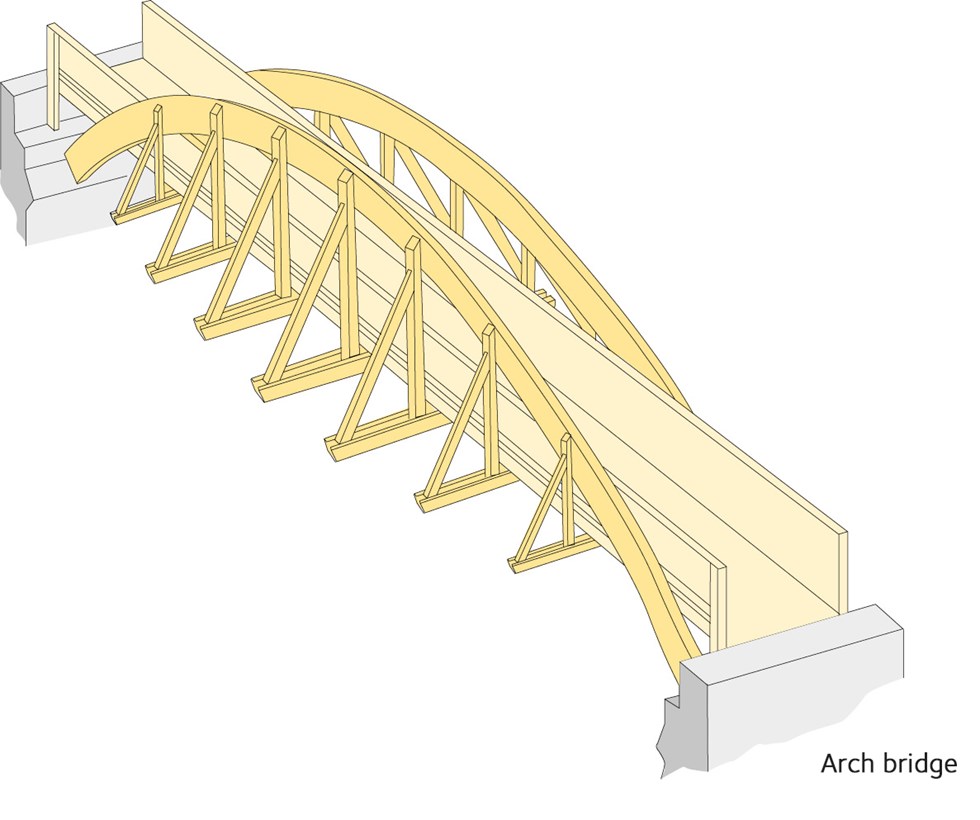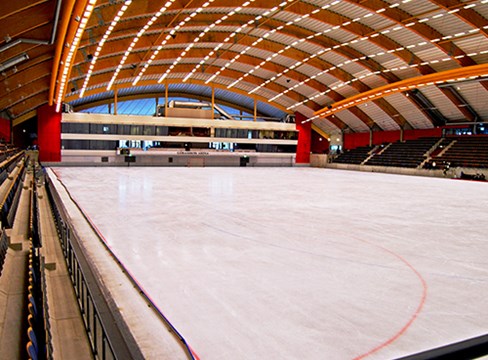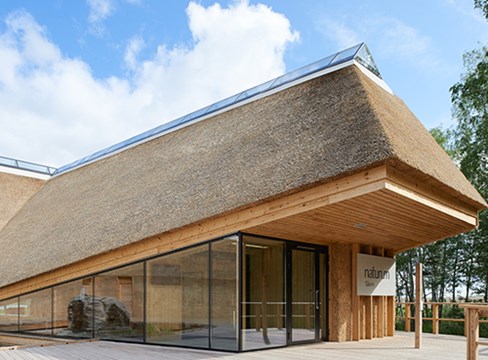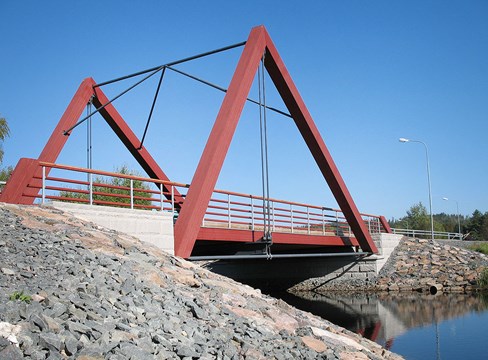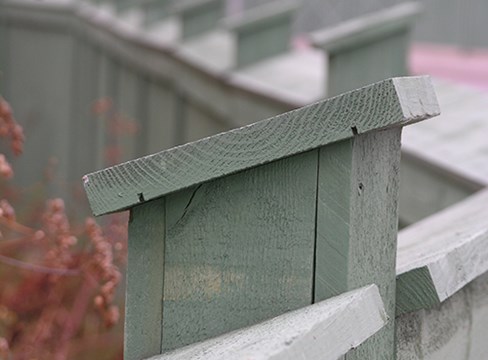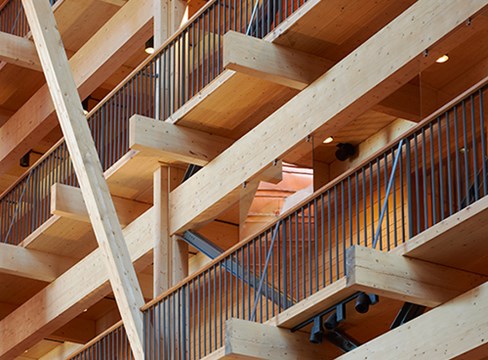Wood in civil engineering
Wooden bridges
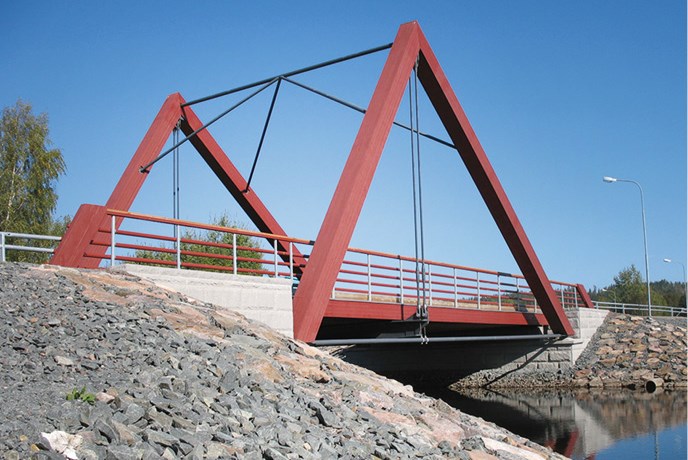 Truss bridge for road traffic, Viresrum. Photo: Per Bergkvist.
Truss bridge for road traffic, Viresrum. Photo: Per Bergkvist.
Building large wooden bridges is a trend that has advanced rapidly over the past 20 years. The trend began in Norway and Finland, but has also now gained significant ground in Sweden.
Bridges are traditionally built using concrete or steel. Wood is replacing some of these materials primarily due to its low weight ratio, which means that complete components can rapidly be assembled on the construction site. The ability to assemble a wooden bridge with no or just a few hours’ closure of the traversing road or railway is a functionally and economically very strong argument – and usually the deciding one. Today’s functional requirements for bridges are the same for all materials, and even the service life is standardised. Bridges in wood often attract attention due to their design and structure, and become a positive feature in the landscape.
Today, wood is used in bridges for pedestrians, cyclists and moped riders, as well as for road bridges. The longest pedestrian and cycle bridge is over 200 m long and the longest road bridge is over 100 m. In a wooden bridge, the main load-bearing structure is wood, for example glulam beams or sheets of cross laminated timber (CLT). Bridge systems such as trusses, arches, cable-stays and suspenders are also used. The parts are manufactured with a high degree of prefabrication so that the components can be assembled quickly on site. Wooden bridges are also lightweight, which is a benefit in terms of groundworks, transport, assembly and the environment.
Bridges made from wood are ideal for pedestrian and cycle traffic. The low weight of the bridge itself, combined with small-scale traffic loads, means that the bridges are more slimline, lighter and more economical than bridges in other construction materials.
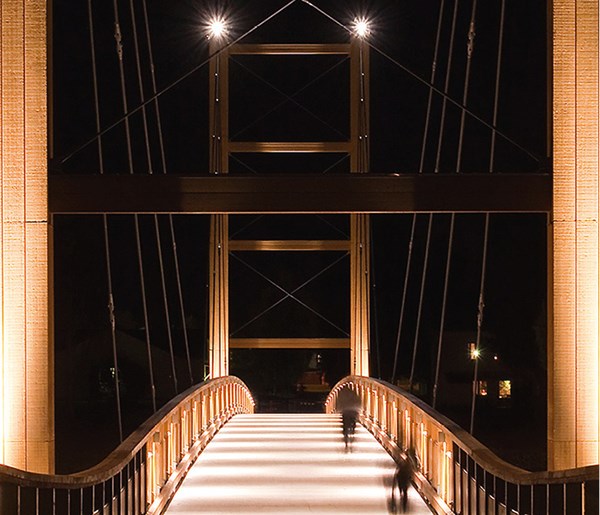
Cable-stayed bridge for pedestrians and cyclists, Skellefteå. Photo: Oliver Marklund.
Wooden bridges are also built for road traffic and to carry a full traffic load in line with prevailing standards. Special bridge types with lower requirements for load-bearing capacity have been developed for applications in forestry and agriculture.
Wooden bridges tolerate aggressive environments well and retain their properties over a long time. Constituent load-bearing parts are protected from moisture through structural wood protection, combined with chemical wood preservative. Cladding may also be used to protect the structure. Most wooden bridges are surface treated. Rolling checks and regular maintenance are unavoidable, whatever the construction material.
Acoustic barriers
Noise from road and train traffic is often felt to be disturbing. Regulations on maximum sound level outside and inside homes are increasing the need for acoustic barriers. Wooden barriers are the most common type.
The design of acoustic barriers is important from a functional perspective, but also in terms of their impact on the landscape. Roads with acoustic barriers can look to road users like a monotonous corridor that reduces any contact with the surroundings. And for residents, acoustic barriers can obscure the view. They also get to see the barriers close-up and in detail. An acoustic barrier therefore has two “fronts” with very different design requirements. The scope for variation in wooden structures provides good potential to meet the high standards required.
Road traffic noise is made up of tyre and road noise, the sound of the wind and engine noise. Noise from rail traffic comes primarily from the contact between the wheels and the track.
The sound spreads in the form of sound waves. Sound can be reflected, broken up or absorbed. The propagation of the noise is strongly influenced by the flora and topography of the land. The sound level falls as the distance from the source increases.
When a sound wave meets a barrier, part of the sound is reflected, some of it is absorbed by the surface of the barrier and some passes through the barrier.
To reduce the reflection, the surface of the barrier can be clad in an absorbent material such as wood wool or mineral wool boards.
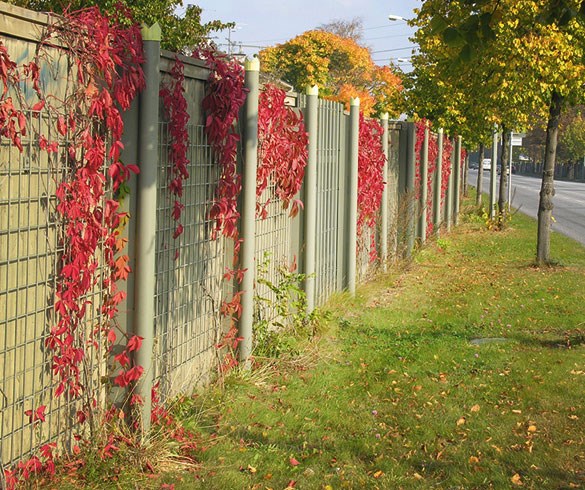 Acoustic barrier Drottningholmsvägen, Stockholm. Photo: Per Bergkvist.
Acoustic barrier Drottningholmsvägen, Stockholm. Photo: Per Bergkvist.
The sound level drops in the shadow of the barrier, with the scale of the reduction depending primarily on the height and length of the acoustic barrier. For practical reasons, the height of the barrier is often limited to 3–4 m.
The sound insulation property of an acoustic barrier can be determined by taking measurements in a laboratory. Under standard SS-EN 1793, the barriers are divided into four classes:
- B0 for barriers whose sound insulation has not been tested in the laboratory.
- B1 for <15 dB
- B2 for 15–24 dB
- B3 for >24 dB.
In practice, a reduction of at least 20–25 dB is required. This can be achieved with wooden structures, particularly where barriers with double panels are used.
Examples of acoustic barriers with single-sided wood cladding that meet class B2:
- Simple 22 mm boarded wall
- Tongue and groove 20 mm boarded wall
- Rebated 28 mm cladding.
An acoustic barrier must be completely sealed against the noise. Long, narrow gaps along the ground and between different elements can cause a particular deterioration in the level of sound insulation. Tongue and groove exterior cladding is preferable to rebated boarding. Where there are higher requirements for sound insulation, simple boarding is supplemented with a sheet material. The seal along the ground is crucial, and is often ensured using cement bonded particleboard or backfilling with coarse gravel.
The acoustic barrier’s adaptation to the terrain is important, particularly in hilly sections. Level differences are best dealt with by stepping the barrier, since curving top and bottom edges complicate the planning and manufacture.
The structure and foundations of the acoustic barriers must be dimensioned to tolerate the relevant loads, particularly wind loads, and be designed for a long service life by applying good construction techniques, suitable material choices and surface treatment that takes account of future maintenance needs.

